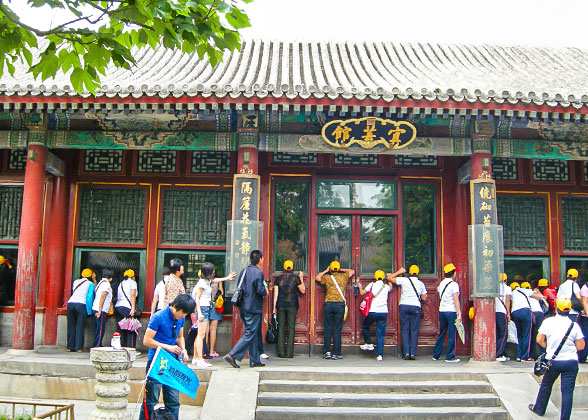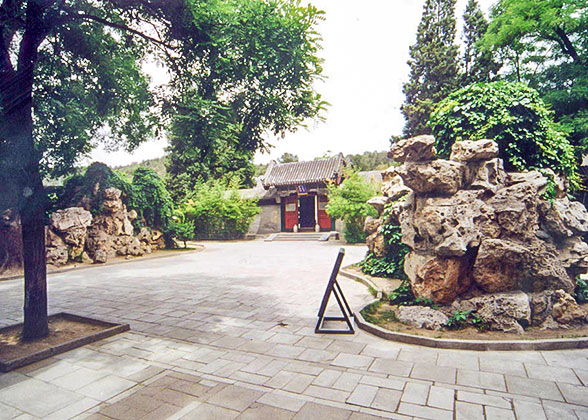Yiyun House
Constructed in a typical Chinese courtyard style, Yiyun House is located behind the Hall of Jade Ripples. This central structure was originally built in the reign of Emperor Qianlong for collecting books. It was named ‘Yiyun House’ because the word 'Yun’ in Chinese is a kind of aromatic plant that can protect books from moths. Yiyuan House was a place to store books, hence its name. Burned down by the Anglo-French Allied Forces in 1860, Yiyun House was repaired during the reign of Emperor Guangxu and used as the abode of his Empress, Longyu.
Empress Longyu, the niece of Empress Dowager Cixi and the wife of Emperor Guangxu, was the last empress of the Qing Dynasty. Although she was rather homely, Cixi arranged a marriage for her with Emperor Guangxu. However, they didn’t get along well with each other. She was not favored by Emperor Guangxu, and lived alone in Yiyun House. She usually accompanied Cixi and live freely even during the captivity of Guangxu. In 1908, Cixi and Guangxu died of ill health. Longyu was elevated to Empress Dowager after the succession of 3-year-old Puyi to the throne, although she was not Puyi’s birth mother. At the end of the Revolution in 1911, she released the abdication script, ending over 200 years of Qing Empire and 2,000 years of Chinese feudalism. Two years later, Longyu died at an age of forty-six.
Yiyun House is actually a complex of structures and includes Yiyun Gate, Yiyun House, Jinxi House, Daocun House and corridors. The entrance is through the exquisitely adorned Floral-Pendant style Yiyun Gate, located near the Hall of Jade Ripples. Yiyun House, as the main construction in this courtyard, is south-facing. It is five rooms wide, with a bat-shaped plaque hanging in the middle. Its roof is a combination of flush gable in front and overhanging gable in the back. Jinxi House in the west and Daocun House in the east, the two side structures are also five rooms wide with a flush gable roof. Inside the Yiyun Gate there are ten stone inscriptions that were engraved by Emperor Qianlong.
|
|
The courtyard used to be an open space leading directly to the foot of the Longevity Hill. In the 19th year of the reign of Emperor Guangxu a north gate and corridors were added. A year later an east gate was added to the Hall of Joyful Longevity. As a result, Yiyun House was connected with the Hall of Jade Ripples, Hall of Joyful Longevity and Garden of Virtue and Harmony. Visitors can go between them without going outside.
In 1992, the Yiyun House furnishings were restored based on the archival records of furnishings during the reign of Emperor Qianlong when the Summer Palace was called Garden of Clear Ripples (Qingyiyuan). During his reign it was elegantly furnished and the furniture was remarkable in its features. Although it changed over the years as the functions of the house changed, there are still one hundred exquisite furnishings displayed now. For example, the throne of Empress Longyu is decorated with precious stones and bamboo filaments, reflecting her exquisite dignity. Now, over one hundred antiques items are displayed here.
![]() Next: Hall of Joyful Longevity
Next: Hall of Joyful Longevity
![]() Related Link: Summer Palace Travel Tips
Related Link: Summer Palace Travel Tips

